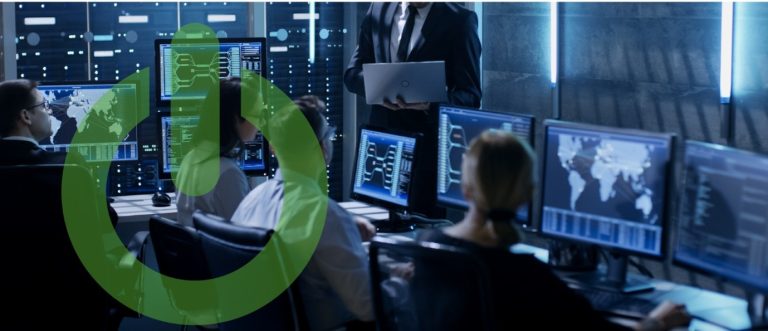Sentry Fire Safety Group, the UK’s leading manufacturer of bespoke, certified fire safety doorsets, is proud to have been recognised as one of the nation’s fastest-growing investment-backed businesses. This prestigious accolade comes from a landmark report commissioned by BDO LLP to analyse value creation and understand supercharged growth within UK businesses. Sentry Doors, which is owned by Cairngorm Capital, is a trusted partner for fire safety compliance across a diverse range of sectors, including social housing, education, healthcare, leisure, and commercial. From their Birmingham and Doncaster sites, they manufacture a comprehensive range of fire safety and security doorsets that meet the most stringent building regulations. The company works closely with social housing providers to replace unsafe fire doors, a critical area of focus following the Grenfell tragedy. The inaugural Private Equity Value Report written by Real Deals, on behalf of BDO, revealed that the 435 qualifying companies achieved an average combined EBITDA and Compound Annual Growth Rate (CAGR) exceeding 100% between the 2020 and 2022 financial years. Sentry has demonstrably surpassed these impressive benchmarks. Within Yorkshire, Sentry stood out as a regional leader, ranking a remarkable number 15 among the 38 fastest-growing businesses. This recognition underscores Sentry’s exceptional performance in areas like EBITDA growth and job creation over the last three years. Moreover, Sentry secured the number 3 position within the Yorkshire manufacturing sector, further solidifying its position as a leader within the regional manufacturing landscape. 100% increase in turnover and profits Since Cairngorm Capital acquired Sentry Doors in 2019, the company has witnessed remarkable growth. A £3 million investment has equipped them with state-of-the-art machinery and a new ERP system which has helped to optimise efficiency. This significant investment was followed by the strategic acquisition of E. & S. W. Knowles & Company Limited (Knowles) in August 2022, which solidified Sentry’s position as the UK leader in fire safety and security doorsets, and expanded their footprint across two sites. The Cairngorm Capital investment, coupled with the Knowles acquisition, has more than doubled Sentry’s production capacity, and their product ranges have expanded to include the specialist finishes used by the health, education and private sectors. This combined investment and acquisition strategy has not only enabled them to cater to new markets through Knowles’ expertise, but also positioned them to meet the growing demands arising from new fire safety legislation. As a result, these efforts have yielded a remarkable 100% increase in both turnover and profits, along with a 36% increase in EBITDA between 2020-2022. This growth has translated into significant job creation, with employee numbers jumping from 28 in 2019 to a current workforce of 200 across both the Doncaster and Birmingham sites. As a leading, local employer, Sentry prioritises employee development and invests in its people through dedicated training programmes, ensuring a skilled and knowledgeable team. Over the years, Sentry has cultivated a supportive, family-oriented company culture that attracts and retains top talent. They also support the local economy by continuing to utilise trusted, local supply chain partners. Sustainable manufacturing practices As well as following an impressive growth trajectory, Sentry has also begun its journey towards a more sustainable future, and the company recently hosted Ed Miliband, Shadow Secretary of State for Energy Security and Net Zero, who wanted to find out more about Sentry’s sustainability roadmap. They have already adopted a number of eco-friendly manufacturing practices including recycling waste sawdust and using an innovative heat generation system within their warehouse. The Birmingham facility boasts ISO 14001 certification and FSC® Chain of Custody certification, reflecting a commitment to environmentally responsible practices. Sentry’s support for initiatives like Trees for Cities further demonstrates a dedication to sustainability. Ty Aziz, CEO at Sentry Doors, commented: “It’s fantastic to be named alongside so many impressive businesses and is testament to the support of our investors and the hard work of our team. It’s important to shine a light on the positive impact that external investment can have on business’ ambitions and their contribution to their industries and the economy.” “Our decision to partner with Cairngorm Capital in 2019 has proven instrumental to our success. Our initial growth plan aimed to double revenue and triple EBITDA. Today, we’ve surpassed those goals, achieving a fivefold increase across all criteria – revenue, EBIDTA, profit and production figures – since 2019. This signifies the remarkable impact of our strategic partnership.” “We are passionate about delivering exceptional fire safety solutions, prioritising social responsibility, and investing in a sustainable future. While achieving significant growth, we remain committed to our core principles – a strong focus on family values and fostering a positive company culture.” Nick Millward, Director at BDO LLP, added: “Despite the challenges of the past three years, this research demonstrates PE-backed businesses are a resilient and dynamic segment of the UK economy. There’s often a focus on the level of deal activity and headlines around exits but we should also celebrate the value created by investors and management teams working hard to deliver against their growth plans.” To read the full Real Deals report, visit https://www.bdo.co.uk/en-gb/insights/industries/private-equity/private-equity-value-report. Find out more about Sentry Doors by visiting https://sentrydoors.co.uk/. Building, Design & Construction Magazine | The Choice of Industry Professionals














